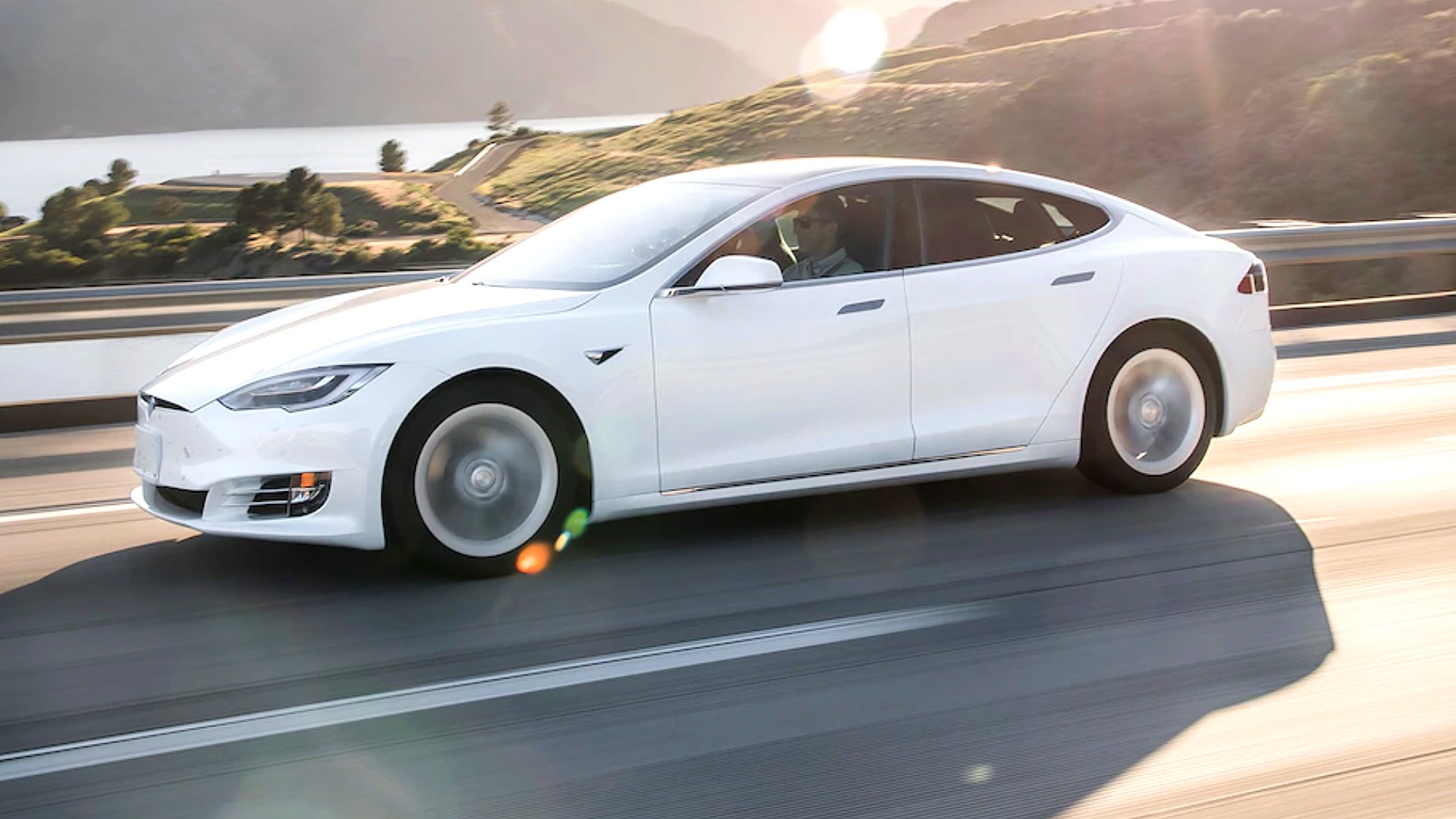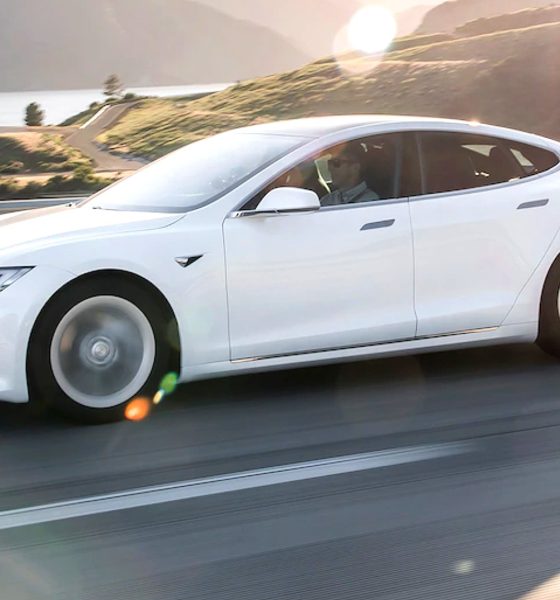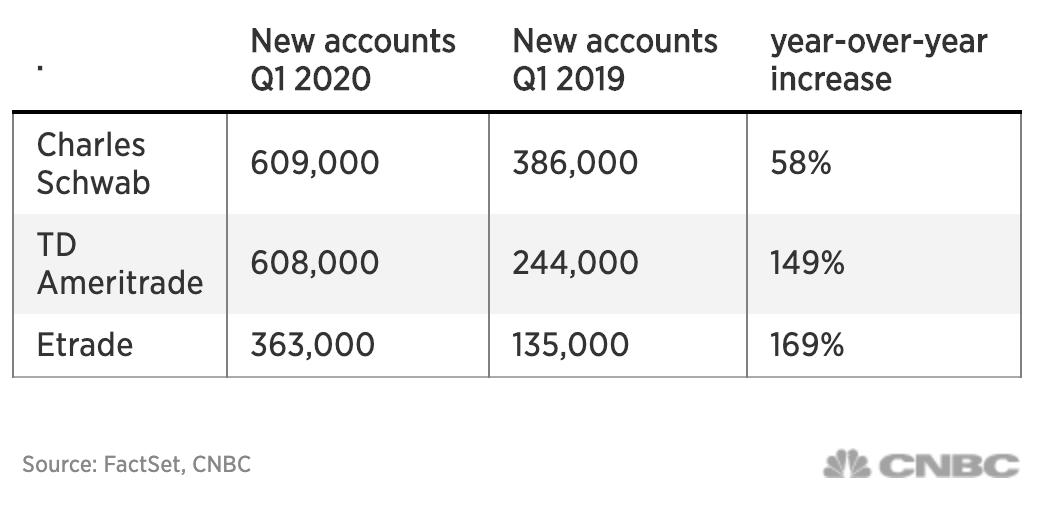

Investor's Corner
How Tesla (TSLA) took advantage of the retail investing boom
Tesla (NASDAQ: TSLA) stock has split 5:1. With its increased volume of shares, the price has adjusted accordingly, making its stock more available to retail investors who have become more prevalent and populous during 2020.
TSLA stock officially adjusted in price on Monday, August 31, 2020, and are now available for $442.68 per share. The adjustment in price came after the stock performed a 5:1 split, which was approved by Tesla’s Board of Directors on August 11.
As the COVID-19 pandemic surged through the world and changed life as it was once known, entertainment simply halted. Sports and shows stopped to prevent the spread of the virus, businesses closed and stocks fell. However, while the world was adjusting, it was the opportunity of a lifetime for young, retail investors to get their first taste of Wall Street as company valuations dropped due to closures and decreased demand.
While some businesses wilted in the wake of the pandemic, other entities grew. One of these entities was online brokerage firms, like Robinhood, Charles Schwab, and TD Ameritrade, who all reported increases in accounts through the first quarter of 2020.
Some of these companies experienced a growth of 170% in new accounts, proving that investing on your Smartphone is simple and accessible. Schwab, TD Ameritrade, and E-Trade all reported massive increases in account ownership in Q1 2020 compared to the same time period a year prior. Schwab saw a 59% year-over-year increase in accounts, while TD Ameritrade and E-Trade saw a 149% and 169% increase, respectively.

Why are more accounts being created on these platforms? It comes down to availability, JJ Kinahan of TD Ameritrade said.
“Perhaps because they’re home or perhaps because of furloughs, they also have time to dedicate to their investments that they didn’t necessarily have before,” Kinahan said to CNBC.
However, no-fee trading and accessibility through a Smartphone have also driven a younger demographic to get involved in the market.
“I think a lot of the innovation around trading commissions has really driven the accessibility of the markets for everyone and clearly that cohort, the younger ones, are seeing it for the first time in the headlines every day,” Tim Welsh of Nexus Strategy said to CNBC.
In terms of trading volume from retail investors, it has doubled in 2020 compared to last year as now 20% of daily stock market activity comes from individuals, according to Citadel Securities.
Whether Tesla realized that retail investors were getting involved in trading because of the pandemic is unknown. However, the company did realize that its surge in price per share in 2020 was not favorable for younger individuals or retail investors as a whole, so it performed the split.
CEO Elon Musk considered a split on June 30, when @TeslaGong had mentioned that a stock split would help more fans of the company own shares. While Musk said it was “worth discussing at annual shareholder’s meeting,” the company completed a split more than three weeks before that event will take place on September 22.
Worth discussing at annual shareholders meeting
— Elon Musk (@elonmusk) July 1, 2020
However, allowing fans, employees, and individual investors contributes to Tesla’s mission as a company. Past selling cars or putting solar panels on houses, the goal is to accelerate the world’s transition to sustainable energy. By increasing the number of people who own the company’s stock, Tesla effectively increases the number of supporters it has in making the goal become a reality. With the widespread availability of TSLA shares, more people will contribute to the fight against climate change.
Disclosure: I have no ownership in shares of TSLA and have no plans to initiate any positions within 72 hours.

Investor's Corner
Tesla stock closes at all-time high on heels of Robotaxi progress

Tesla stock (NASDAQ: TSLA) closed at an all-time high on Tuesday, jumping over 3 percent during the day and finishing at $489.88.
The price beats the previous record close, which was $479.86.
Shares have had a crazy year, dipping more than 40 percent from the start of the year. The stock then started to recover once again around late April, when its price started to climb back up from the low $200 level.
This week, Tesla started to climb toward its highest levels ever, as it was revealed on Sunday that the company was testing driverless Robotaxis in Austin. The spike in value pushed the company’s valuation to $1.63 trillion.
Tesla Robotaxi goes driverless as Musk confirms Safety Monitor removal testing
It is the seventh-most valuable company on the market currently, trailing Nvidia, Apple, Alphabet (Google), Microsoft, Amazon, and Meta.
Shares closed up $14.57 today, up over 3 percent.
The stock has gone through a lot this year, as previously mentioned. Shares tumbled in Q1 due to CEO Elon Musk’s involvement with the Department of Government Efficiency (DOGE), which pulled his attention away from his companies and left a major overhang on their valuations.
However, things started to rebound halfway through the year, and as the government started to phase out the $7,500 tax credit, demand spiked as consumers tried to take advantage of it.
Q3 deliveries were the highest in company history, and Tesla responded to the loss of the tax credit with the launch of the Model 3 and Model Y Standard.
Additionally, analysts have announced high expectations this week for the company on Wall Street as Robotaxi continues to be the focus. With autonomy within Tesla’s sights, things are moving in the direction of Robotaxi being a major catalyst for growth on the Street in the coming year.
Elon Musk
Tesla needs to come through on this one Robotaxi metric, analyst says
“We think the key focus from here will be how fast Tesla can scale driverless operations (including if Tesla’s approach to software/hardware allows it to scale significantly faster than competitors, as the company has argued), and on profitability.”

Tesla needs to come through on this one Robotaxi metric, Mark Delaney of Goldman Sachs says.
Tesla is in the process of rolling out its Robotaxi platform to areas outside of Austin and the California Bay Area. It has plans to launch in five additional cities, including Houston, Dallas, Miami, Las Vegas, and Phoenix.
However, the company’s expansion is not what the focus needs to be, according to Delaney. It’s the speed of deployment.
The analyst said:
“We think the key focus from here will be how fast Tesla can scale driverless operations (including if Tesla’s approach to software/hardware allows it to scale significantly faster than competitors, as the company has argued), and on profitability.”
Profitability will come as the Robotaxi fleet expands. Making that money will be dependent on when Tesla can initiate rides in more areas, giving more customers access to the program.
There are some additional things that the company needs to make happen ahead of the major Robotaxi expansion, one of those things is launching driverless rides in Austin, the first city in which it launched the program.
This week, Tesla started testing driverless Robotaxi rides in Austin, as two different Model Y units were spotted with no occupants, a huge step in the company’s plans for the ride-sharing platform.
Tesla Robotaxi goes driverless as Musk confirms Safety Monitor removal testing
CEO Elon Musk has been hoping to remove Safety Monitors from Robotaxis in Austin for several months, first mentioning the plan to have them out by the end of 2025 in September. He confirmed on Sunday that Tesla had officially removed vehicle occupants and started testing truly unsupervised rides.
Although Safety Monitors in Austin have been sitting in the passenger’s seat, they have still had the ability to override things in case of an emergency. After all, the ultimate goal was safety and avoiding any accidents or injuries.
Goldman Sachs reiterated its ‘Neutral’ rating and its $400 price target. Delaney said, “Tesla is making progress with its autonomous technology,” and recent developments make it evident that this is true.
Investor's Corner
Tesla gets bold Robotaxi prediction from Wall Street firm
Last week, Andrew Percoco took over Tesla analysis for Morgan Stanley from Adam Jonas, who covered the stock for years. Percoco seems to be less optimistic and bullish on Tesla shares, while still being fair and balanced in his analysis.

Tesla (NASDAQ: TSLA) received a bold Robotaxi prediction from Morgan Stanley, which anticipates a dramatic increase in the size of the company’s autonomous ride-hailing suite in the coming years.
Last week, Andrew Percoco took over Tesla analysis for Morgan Stanley from Adam Jonas, who covered the stock for years. Percoco seems to be less optimistic and bullish on Tesla shares, while still being fair and balanced in his analysis.
Percoco dug into the Robotaxi fleet and its expansion in the coming years in his latest note, released on Tuesday. The firm expects Tesla to increase the Robotaxi fleet size to 1,000 vehicles in 2026. However, that’s small-scale compared to what they expect from Tesla in a decade.
Tesla expands Robotaxi app access once again, this time on a global scale
By 2035, Morgan Stanley believes there will be one million Robotaxis on the road across multiple cities, a major jump and a considerable fleet size. We assume this means the fleet of vehicles Tesla will operate internally, and not including passenger-owned vehicles that could be added through software updates.
He also listed three specific catalysts that investors should pay attention to, as these will represent the company being on track to achieve its Robotaxi dreams:
- Opening Robotaxi to the public without a Safety Monitor. Timing is unclear, but it appears that Tesla is getting closer by the day.
- Improvement in safety metrics without the Safety Monitor. Tesla’s ability to improve its safety metrics as it scales miles driven without the Safety Monitor is imperative as it looks to scale in new states and cities in 2026.
- Cybercab start of production, targeted for April 2026. Tesla’s Cybercab is a purpose-built vehicle (no steering wheel or pedals, only two seats) that is expected to be produced through its state-of-the-art unboxed manufacturing process, offering further cost reductions and thus accelerating adoption over time.
Robotaxi stands to be one of Tesla’s most significant revenue contributors, especially as the company plans to continue expanding its ride-hailing service across the world in the coming years.
Its current deployment strategy is controlled and conservative to avoid any drastic and potentially program-ruining incidents.
So far, the program, which is active in Austin and the California Bay Area, has been widely successful.








